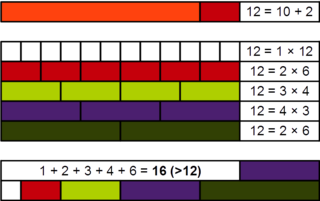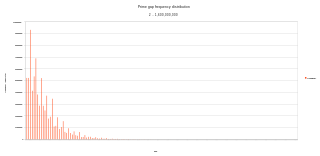The sieving process

| Begin with a list of integers starting with 1: | ||||||||||||||||||||||||
| 1 | 2 | 3 | 4 | 5 | 6 | 7 | 8 | 9 | 10 | 11 | 12 | 13 | 14 | 15 | 16 | 17 | 18 | 19 | 20 | 21 | 22 | 23 | 24 | 25 |
| Every second number (all even numbers) in the list is eliminated, leaving only the odd integers: | ||||||||||||||||||||||||
| 1 | 3 | 5 | 7 | 9 | 11 | 13 | 15 | 17 | 19 | 21 | 23 | 25 | ||||||||||||
| The first number remaining in the list after 1 is 3, so every third number (beginning at 1) which remains in the list (not every multiple of 3) is eliminated. The first of these is 5: | ||||||||||||||||||||||||
| 1 | 3 | 7 | 9 | 13 | 15 | 19 | 21 | 25 | ||||||||||||||||
| The next surviving number is now 7, so every seventh remaining number is eliminated. The first of these is 19: | ||||||||||||||||||||||||
| 1 | 3 | 7 | 9 | 13 | 15 | 21 | 25 | |||||||||||||||||
Continue removing the nth remaining numbers, where n is the next number in the list after the last surviving number. Next in this example is 9.
One way that the application of the procedure differs from that of the Sieve of Eratosthenes is that for n being the number being multiplied on a specific pass, the first number eliminated on the pass is the n-th remaining number that has not yet been eliminated, as opposed to the number 2n. That is to say, the list of numbers this sieve counts through is different on each pass (for example 1, 3, 7, 9, 13, 15, 19... on the third pass), whereas in the Sieve of Eratosthenes, the sieve always counts through the entire original list (1, 2, 3...).
When this procedure has been carried out completely, the remaining integers are the lucky numbers (those that happen to be prime are in bold):
- 1, 3 , 7 , 9, 13 , 15, 21, 25, 31 , 33, 37 , 43 , 49, 51, 63, 67 , 69, 73 , 75, 79 , 87, 93, 99, 105, 111, 115, 127 , 129, 133, 135, 141, 151 , 159, 163 , 169, 171, 189, 193 , 195, 201, 205, 211 , 219, 223 , 231, 235, 237, 241 , 259, 261, 267, 273, 283 , 285, 289, 297, 303, 307 , 319, 321, 327, ... (sequence A000959 in the OEIS ).
The lucky number which removes n from the list of lucky numbers is: (0 if n is a lucky number)
- 0, 2, 0, 2, 3, 2, 0, 2, 0, 2, 3, 2, 0, 2, 0, 2, 3, 2, 7, 2, 0, 2, 3, 2, 0, 2, 9, 2, 3, 2, 0, 2, 0, 2, 3, 2, 0, 2, 7, 2, 3, 2, 0, 2, 13, 2, 3, 2, 0, 2, 0, 2, 3, 2, 15, 2, 9, 2, 3, 2, 7, 2, 0, 2, 3, 2, 0, 2, 0, 2, 3, 2, 0, 2, 0, 2, 3, 2, 0, 2, 7, 2, 3, 2, 21, 2, ... (sequence A264940 in the OEIS )




